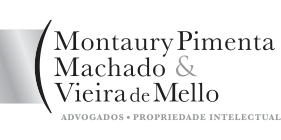In mid-2018, the Brazilian Patent and Trademark Office (BPTO) published new guidelines for non-use cancellation actions, implementing significant changes in such proceedings in order to expedite examinations.
In Brazil, a trademark registration is vulnerable to a non-use cancellation action from the fifth year of its grant onwards and may be cancelled if (a) its use is not proven during the past five years; (b) such use has been interrupted for more than five consecutive years; or (c) the lack of use is not justified based on legitimate reasons.
The trademark owner has a 60-day term to submit all the necessary evidence, starting from the publication date of the non-use cancellation request, which will be analyzed under the guidelines stipulated in BPTO’s Trademark Manual, subject of the changes herein addressed.
What are the implemented changes?
Legitimate interests
A non-use cancellation action may only be initiated by a third party with legitimated interests, which must be proven through a petition based on expectation of rights or acquired rights.
According to the new guidelines, the existence of a legitimate interest will be verified in relation to the time when the non-use cancellation action was filed. Consequently, the party will be considered legitimate, even if, at the time of the examination, its rights or expectations of have ceased.
Legitimate reasons for non-use
Legitimate reasons for non-useUnder Brazilian Trademark Law, the mark will not be forfeited if the owner justifies the lack of use forlegitimate reasons. This could involve, for instance: reasons of force majeure; the pending authorization of apublic agency for the commercialization of goods; the existence of a lawsuit; or other facts of this nature.
However, the BPTO has stipulated in the new guidelines that such justification must cover at least half of theinvestigation period (5 years counted from the date of the non-use cancellation request).
Otherwise, the owner must also submit evidence that it has been taking necessary steps and effective measuresto initiate or restart the use, such as: a distribution agreement; advertising material relating to the launch ofproducts and services, invoices proving the purchase of necessary materials and machinery, etc.
Evidence of use
Evidence of useAlthough the BPTO used to prioritize invoices as evidence of use, the new guidelines state that any type ofevidence is acceptable as long as (a) it is dated within the five-year investigation period; (b) it references theregistered mark with its original distinctive character; and (c) it references the goods/services covered by the mark.
Additionally, when the investigation period covers the first five years of the grant, the cancellation may bestopped if there is evidence that the owner has been taking effective measures to initiate the use of the mark.However, at the time of the filing of its defense, the mark must already be in use, according to the new BPTO rules.
Amount of evidence
Lastly, another relevant change relates to the necessary amount of evidence to prove use of the mark. Until recently, the BPTO required a significant number of documents, but with the 2018 guidelines any evidence of use within the five-year investigation period and, of course, in accordance with the previous topic, will stop the cancellation, regardless of the amount of evidence submitted.
In 2019, the BPTO has already been examining non-use cancellation actions under the new guidelines and, at this point, the most impactful change observed was the amount of evidence necessary to prove use of the mark, as the office has issued a number of decisions waiving the cancellation after examining only two or three pieces of evidence of use submitted by the trademark owner, which previously would not have been sufficient.
That being said, the BPTO is still adjusting to the new guidelines and we cannot be sure that it will follow thatThat being said, the BPTO is still adjusting to the new guidelines and we cannot be sure that it will follow thatsame line in its future decisions. Therefore, it is always advisable to submit as many pieces of evidence aspossible, in order to protect the trademark registration more efficiently.
Fonte: Lexology - https://www.lexology.com/library/detail.aspx?g=bfd68854-5b65-4302-a07c-f454ce195072




